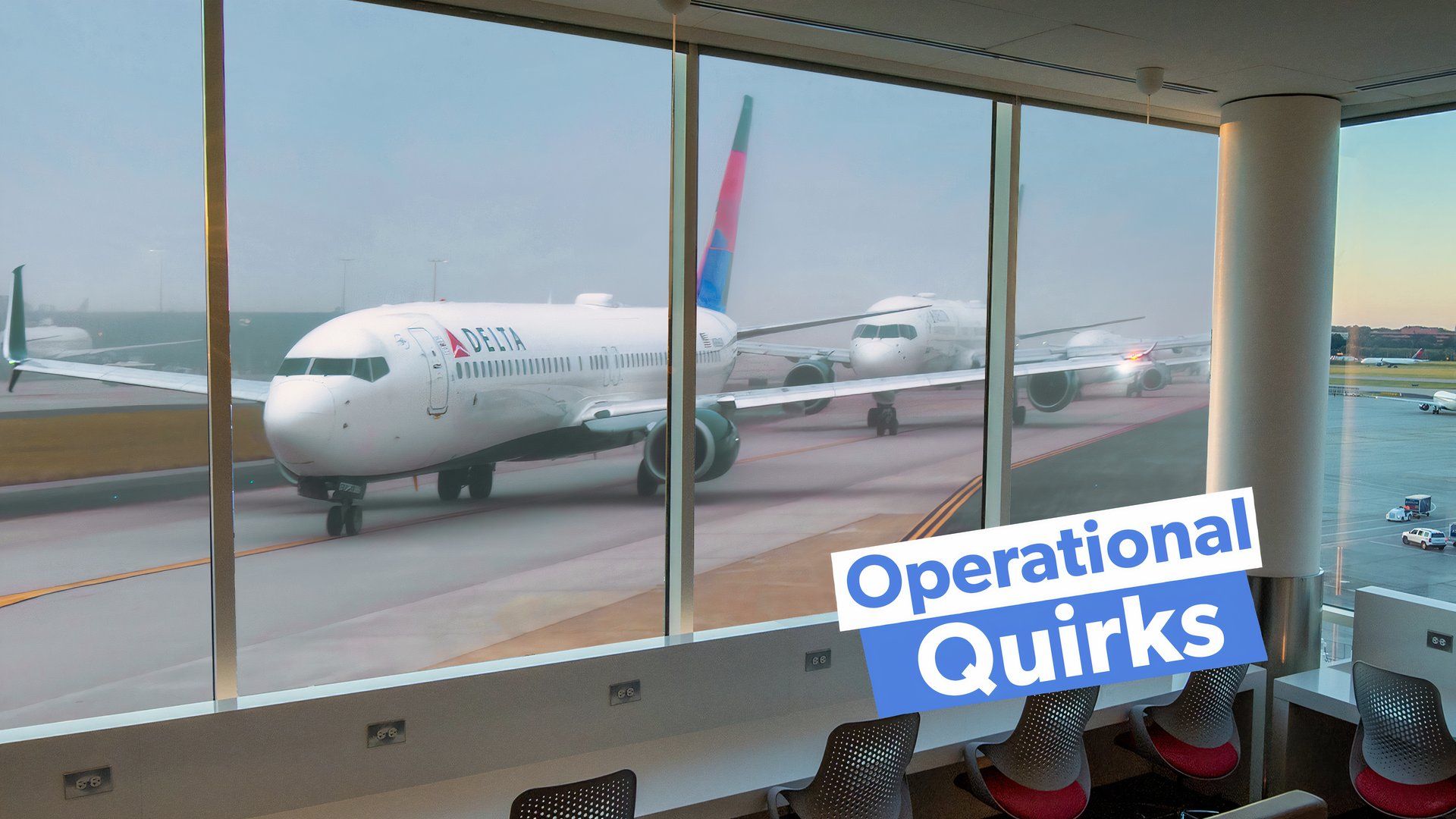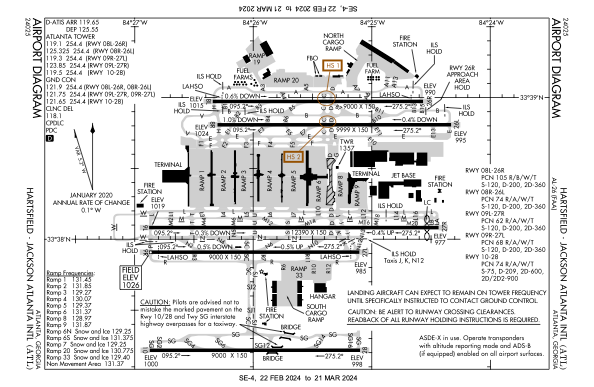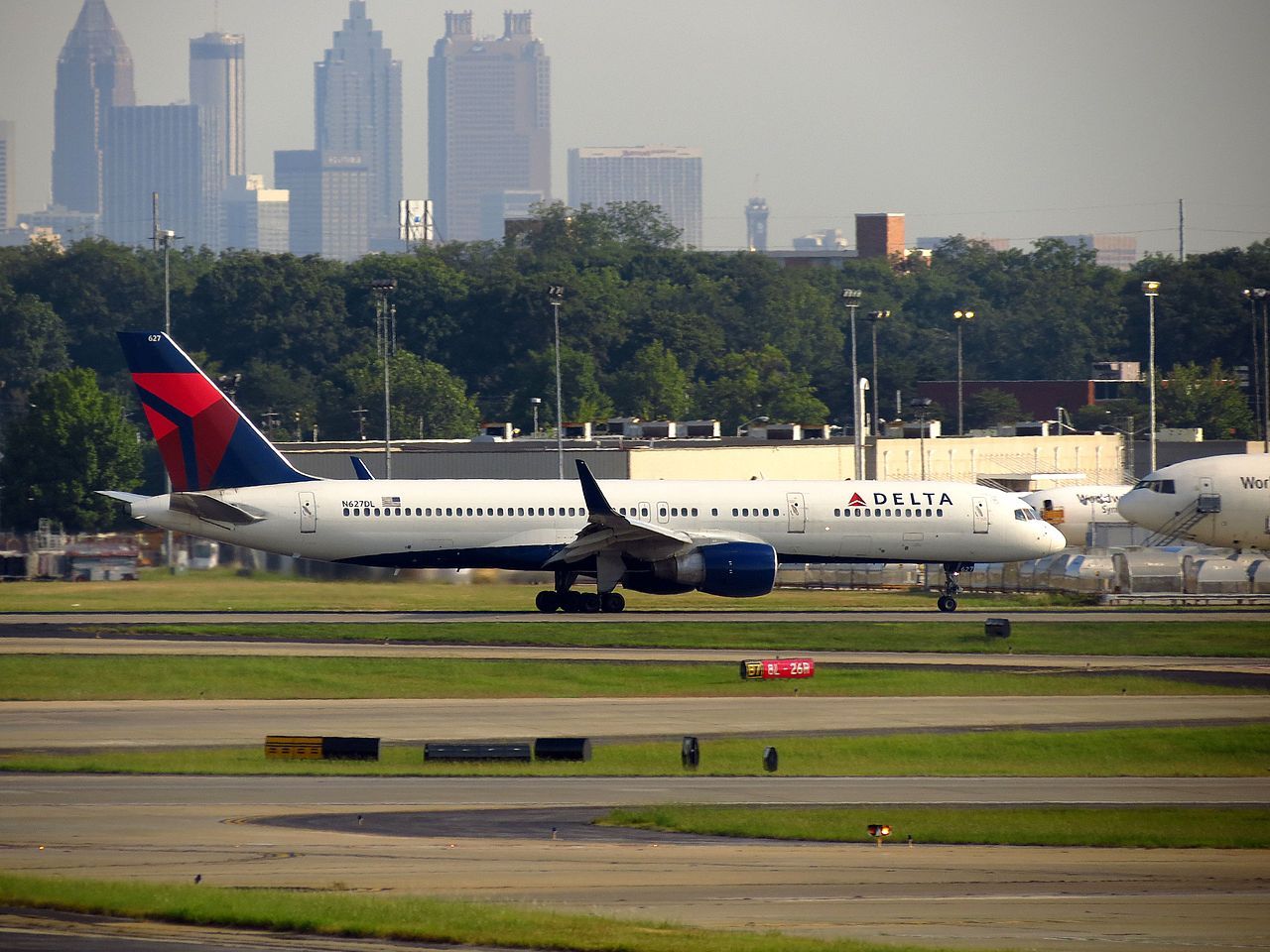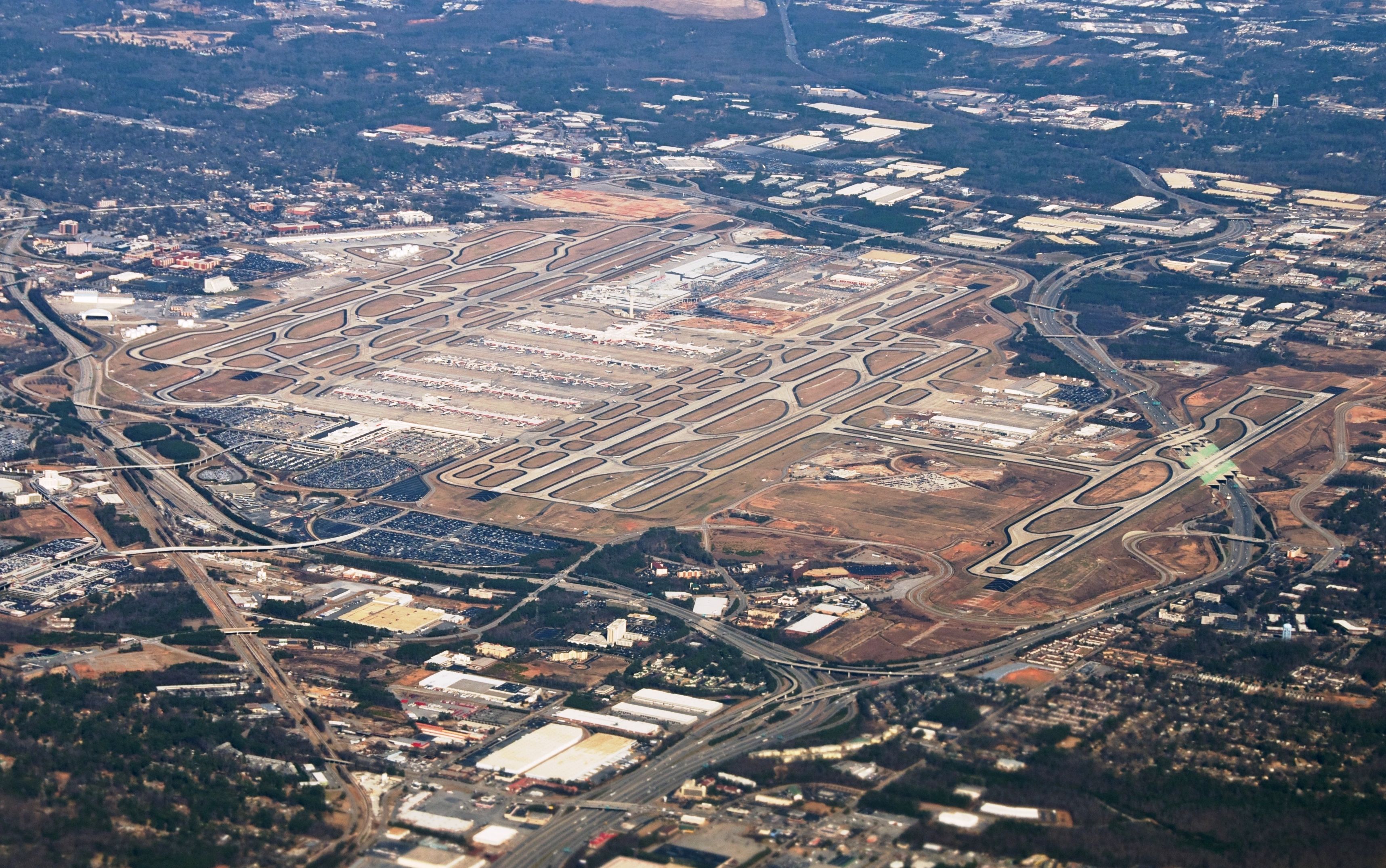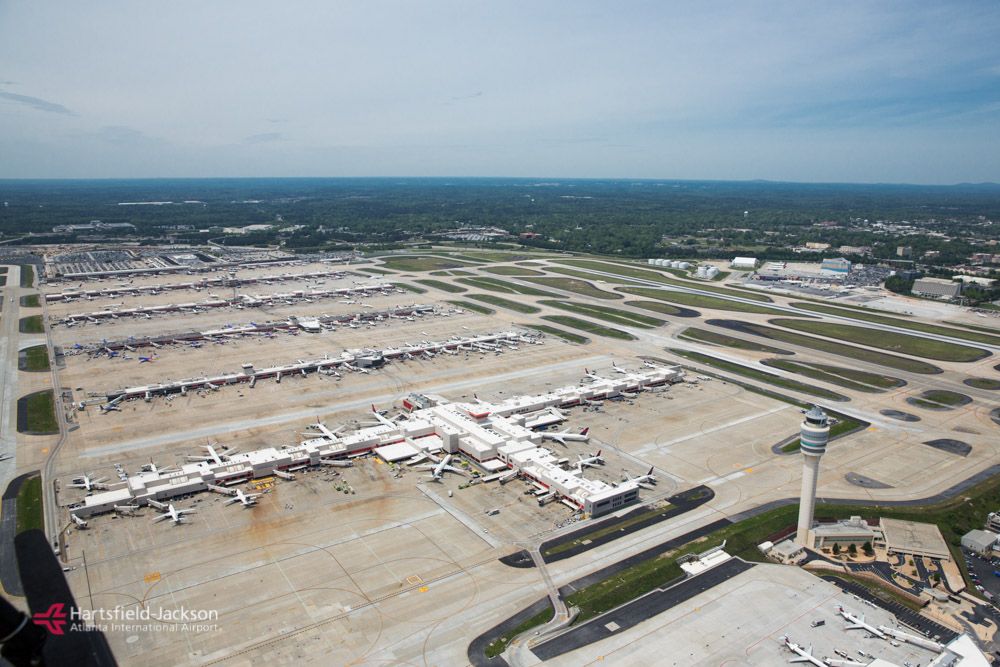Summary
- Atlanta Airport uses inventive architecture for efficient plane movements.
- Atlanta has standard taxi routes and numerous ramps for better traffic flow.
- Waypoints are named after fiction pieces, making operations easier for pilots.
The title of the world’s busiest airport has belonged to Hartsfield-Jackson Atlanta International Airport for many years. The airport, named in honor of former Mayors William B. Hartsfield and Maynard Jackson, is the primary mega-hub of Delta Air Lines and a focus city for Frontier and Southwest. Hartsfield-Jackson has consistently been the busiest airport for passenger traffic for the last two decades and spans 4,700 acres just south of Atlanta’s downtown. This article will discuss the piloting experience at the world’s busiest passenger airport and highlight some interesting operational points.
Straight lines might be the shortest distance, but…
Atlanta’s airport uses simple yet inventive architecture to help move more passengers than any other airport. In 2007, Atlanta was one of the first airports worldwide to open an end-around taxiway to increase traffic flow. Specifically, taxiway Victor was built so that planes could bypass the inboard runway on the airport’s north side. The outboard runway 8L/26R is used almost exclusively for landing, while the inboard runway 8R/26L is used for departures.
In the past, pilots had to wait many minutes before receiving runway crossing instructions after landing. This resulted in lots of dead time and reduced traffic flow since departures would have to be held every so often to allow a group of arrivals to cross the runway. Victor bypasses the runway, allowing for unbridled departures off 8R/26L.
The Victor taxiway was so successful that Atlanta’s airport authority built an identical runway bypass on the south side of the field. Planes that land on 9R/27L and 10/28 can taxi around the inboard runway 9L/27R on the “Whiskey loop,” which was built to resemble the “Victor loop.” Both of these phrases are approved standard taxi phraseology that pilots and controllers use when issuing and reading back operational instructions.
They built a runway where?!?
Another interesting tidbit about Atlanta’s layout is that the far southern runway 10/28 is the only operational runway (not including taxiways) built over a motorway/freeway. The 9,000-foot (2743m) grooved concrete runway passes over the I-285, one of the three primary arterial roadways in the Atlanta metro. The I-285 is 11 lanes wide where it crosses under the east side of runway 10/28.
Although noticeable to drivers on the freeway, pilots can only notice a freeway underneath them after landing on runway 10 while on the SG taxiway. The tall trees, buildings, and general focus required while flying make the highway overpass go unnoticed by most pilots.
Standard taxi routes
Atlanta has more standard taxi routes than nearly every other airport globally. Standard taxi routes were discussed in an article earlier this year about Dallas-Fort Worth International—another truly massive and busy airport. Atlanta, like DFW, has many planes operating simultaneously, necessitating standard routes. This enables controllers to issue a 3-4 word clearance that conveys a multi-sentence instruction. Atlanta has no fewer than ten standard taxi routes. The ones controllers use depend on which way traffic is flowing at the airport.
Photo: FAA
After pilots land on the far southern runway 28, they might be told to taxi via the “Pink West” route. This indicates the pilots should vacate 28 to the right, then taxi on Sierra Golf, make a left on Sierra Charlie, and switch to another tower frequency on the radio. They continue by turning left on Romeo, then hold short of 27L at the end and await further instruction.
From there, a controller can issue another standard instruction, such as “taxi via the Whiskey loop” (as already discussed). This allows Atlanta controllers to issue a mere three instructions—”Pink West, Cross 27L, Whiskey Loop”—to move an aircraft across nearly three miles of pavement. Talk about efficiency!
ATL’s countless ramps
If you’ve been a passenger departing Atlanta, you might have noticed that you almost always push off the gate and stop at a 45-degree angle to the terminal building and taxiway. This is unlike most other airports where the push stops when the plane is parallel to the taxiway. Atlanta ramp controllers issue this instruction to “push tail north/south at a 45” so that more planes can access gates and push back at a given time.
With such a high traffic volume, every ounce of pavement must be used efficiently. Boeing 757-300s and planes larger than it cannot “push at a 45” because their length would restrict planes from utilizing the parallel taxiways on the ramp. These planes push straight back onto the line.
Speaking of ramps, Atlanta has an astounding nine of them. The largest ramps are 1-5. Each is a two-way combination of the gates facing that alleyway. For example, Ramp 2 is a combo of the east side of the A concourse gates and the west side of the B concourse gates. Each ramp has a dedicated (non-FAA) controller directing traffic on it. After landing, pilots don’t bother telling the ground controller which gate they are going to in ATL. Instead, they tell ATC which ramp they are scheduled to park at.
The ramps at Atlanta are yet another example of a well-organized machine. Unlike many other airports, there are few traffic jams on the ramps in Atlanta because they function like two-way streets. Even if a plane has just pushed back and is blocking one side of the alley, the controllers are savvy enough to stagger pushed planes so that arrivals can cross to the other side of the ramp to continue to their gate. Because of this, Atlanta has some of the best “on-to-in” time ratings in the US for such a massive airport.
“On-to-in” is one of a few key metrics airlines use to determine a flight’s total block time or what is advertised to customers. “On-to-in” is the time it takes from landing to parking. Similarly, “out-to-off” is the time from pushback to takeoff, and “off-to-on” is the flight time. These three times compose a flight’s “block.” ATL is a leader in both “out-to-off” and “on-to-in” metrics, a significant measure in Delta’s on-time success.
Waypoint names
One final piece about Atlanta is how neat some of the arrival’s and departure’s waypoint names are. In particular, Atlanta’s SIDs and STARs nod to fiction pieces from George Lucas and J. R. R. Tolkien. A sampling of waypoint names from some procedures are FRDDO, BLLBO, GONDR, MORDR, and HOBBT, elements of The Hobbit and Lord of the Rings (Tolkien). Likewise, Star Wars references abound on the JJEDI 3 arrival, including NEWHP, DTSTR, CHWEE, XWING, EEWOK, and TYFTR. It’s fun for pilots and controllers alike to reference and identify waypoints with intentional names from recognizable fiction series.
Big, but not difficult
Although the busiest airport in the world, Atlanta earns a nod from this pilot for being one of the most thoughtfully constructed from an operational standpoint (not to be conflated with anything specific to the passenger experience). Everything about ATL’s design is meant to keep planes moving efficiently and safely, ideals at the heart of all modern airport designs. The operations take a bit of getting used to for pilots, but once the field’s quirks are known, it’s a pretty easy place to operate in and out of.
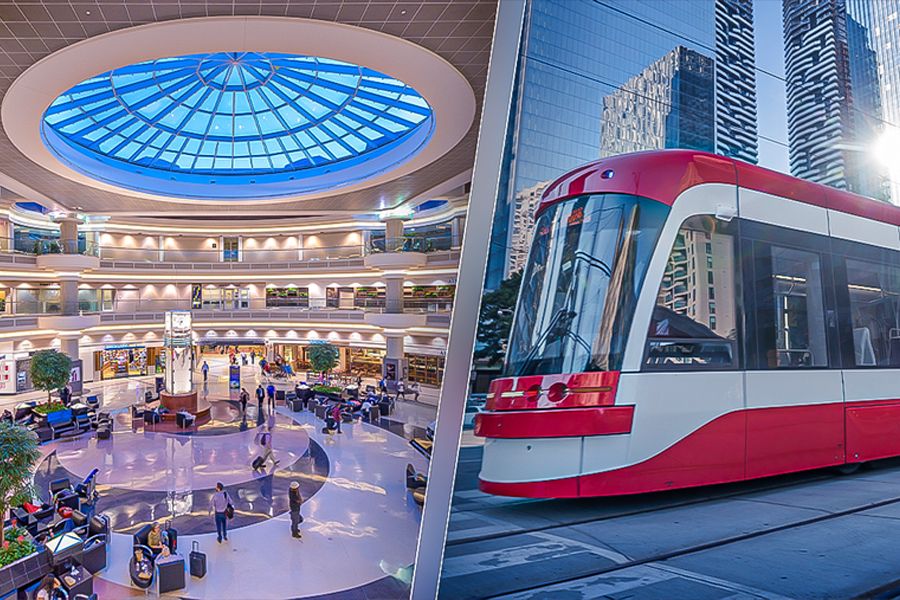
Related
Hartsfield-Jackson Atlanta International: How To Get To The World’s Busiest Airport By Public Transport
There are various ways to get to the airport using public transportation.

